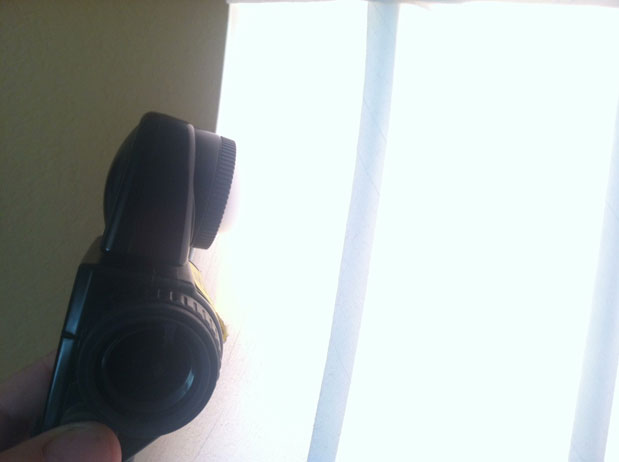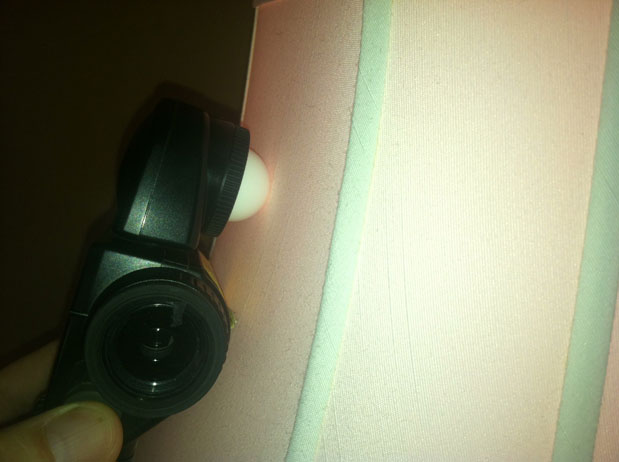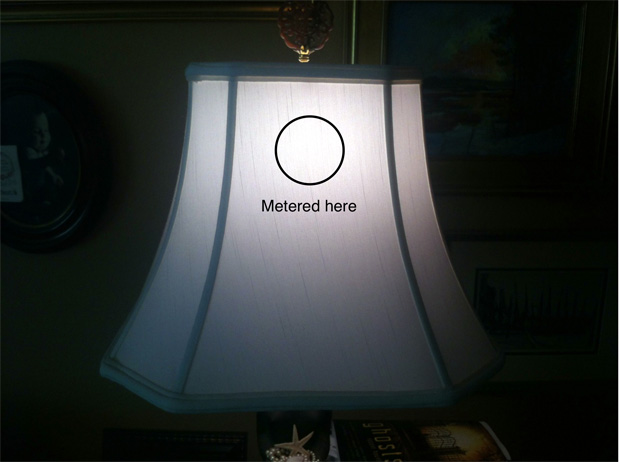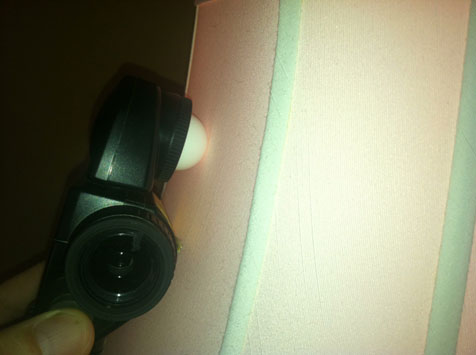Incident meters can only tell you how much light is striking them, and nothing about how bright things are in the real world… except in this one situation. This handy trick for measuring the brightness of diffuse backlit surfaces may be the one way you can surprise your gaffer.
Years ago, when I was working as a camera assistant, I worked with a DP who determined proper film exposure for TV screens by holding the diffuser of his incident meter against the screen and shooting it with whatever stop the meter told him. “I don’t know why it works,” he said, “I just know it does.”
I’ve recently become reacquainted with my incident meter after years–nay, decades!–of eschewing it for the real world objectivity of my spot meter. A spot meter works marvelously well if you know the gamma characteristics of a film stock or camera, but nowadays one can completely change that by spinning a knob. It’s often easier to pre-light a set with an incident meter as they can predict what even the worst camera will be able to see, while spot meters can be best used for checking backgrounds for extreme over- and under-exposure.
I decided to try this DP’s technique on a large diffuse light source and see if there was any predictable relationship between the incident meter reading obtained by holding the diffuser against a light source verses a spot meter reading of the same light source. Here’s what I did:

Yes, I shot this with my iPhone. Sorry. Here’s what it looked like when I turned the flash on:

As you can see, the diffuser is touching the lampshade toward the middle of the brightest lit area:

This is the incident reading, measured using the diffuser:
This is the reflected reading of the same spot:
It looks as if the surface of the lamp shade is 1 2/3 stops brighter than the incident reading, based on a spot meter reading of the same area. As I moved the incident meter’s diffuser around a bit on the lampshade I found that there was an area where the meter saw a two stop differential between the readings, but generally the incident and reflected meter readings fell between 1 2/3 and 2 stops of each other.
This is really interesting. Incident meters shouldn’t be able to tell us about how bright a surface is unless we already know how bright that surface is… but the exception appears to be backlit diffuse materials. The important thing is that the material has to be diffuse: the more of a hot spot you can see through the material the less reliable this method will be. Measuring the brightness of a translucent piece of silk using this method probably won’t result in an accurate reading, but measuring the brightness of a completely diffuse lamp shade should work well.
Why is this useful? I wish I could tell you. The worst case scenario is that it’s one more tool in your toolbox. If you need to measure a backlit diffuse surface and all you have handy is your incident meter, you can touch the diffuser to that surface and know that your meter is telling you how to make that surface appear about the same tone as bright caucasian skin. If you’re reading how much light a practical lamp is casting into the scene and you want to quickly measure how bright the lampshade itself is, you can quickly touch your incident meter to the lampshade and find out.
I tried this with a couple of meters (two Sekonics and a Spectra) and several lamp shades and backlit surfaces. The 1 2/3-to-2-stop rule held true for every diffuse surface I tested. I’m a bit less convinced that this technique works consistently well for TV screens, but if the screen is filled with a large white background then I don’t see why it shouldn’t work reasonably well by making that white surface appear two stops brighter than 18% gray–well within the highlight range of a very poor camera. (In the old days I’d meter TV screens for color and exposure by switching them to an unused channel full of static, as static is a great way to average everything about the surface of a TV screen. Sadly digital makes that nearly impossible now.)
I love finding non-standard ways to use everyday tools, and I look forward to playing around with this technique a bit more. A spot meter will always be more accurate when measuring how physically bright an object is, but a plethora of spot meter readings can quickly become confusing. The use of an incident meter, in conduction with a good monitor and an experienced set of eyes, can be much faster than reading every surface on the set with a spot meter. Incident meters and spot meters are equally valuable tools, but it’s important to learn how to use them so that they speed up your process rather than slow you down.
Art Adams | Director of Photography | 11/26/2012 | www.artadamsdp.com


